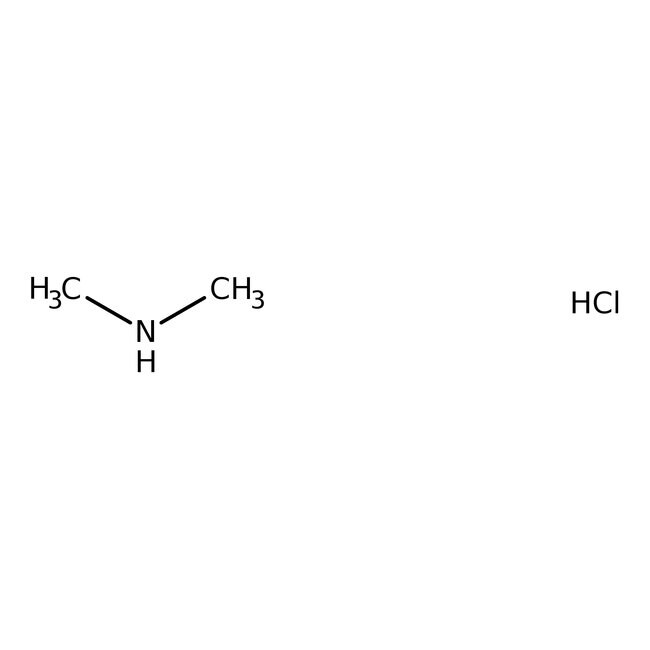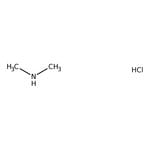Search Thermo Fisher Scientific
Dimethylaminhydrochlorid, 98+ %, Thermo Scientific Chemicals



Dimethylaminhydrochlorid, 98+ %, Thermo Scientific Chemicals
Chemikalien-Kennzeichnungen
Spezifikationen
Beschreibung
This Thermo Scientific Chemicals brand product was originally part of the Alfa Aesar product portfolio. Some documentation and label information may refer to the legacy brand. The original Alfa Aesar product / item code or SKU reference has not changed as a part of the brand transition to Thermo Scientific Chemicals.
Dimethylaminhydrochlorid wird als Zwischenprodukt bei der Herstellung von Pharmazeutika wie Ranitidin und Metformin, Tramadol und Amlodipin verwendet. Es wird als Vorläufer von Atrazin verwendet. Es ist mit Natriumacetat verbunden und wird zur Durchführung der Willgerodt-Kindler-Reaktion zur Herstellung von Amiden verwendet. Seine freie Base reagiert mit Kohlenstoffdisulfid, wodurch Dimethyldithiocarbamat entsteht, das bei der Gummivulkanisation verwendet wird. Es wird bei der Synthese von Dimethyl-(1-Methylpyrrol-2-ylmethyl)-Amin durch die Reaktion mit1-Methylpyrrol und Formaldehyd verwendet.
Löslichkeit
Löslich in Wasser, Alkohol und Chloroform.
Hinweise
Hygroskopisch. Behälter an einem trockenen und gut belüfteten Ort dicht verschlossen halten. Nicht kompatibel mit Oxidationsmitteln.
Abbildungen
Dokumente und Downloads
Zertifikate
Häufig gestellte Fragen (FAQ)
Zitierungen und Referenzen
Sicherheit und Handhabung
Classification of the substance or mixture
CLP classification - Regulation(EC) No 1272/2008
Label Elements
Signal Word
Warning
Hazard Statements
H302 - Harmful if swallowed
H315 - Causes skin irritation
H319 - Causes serious eye irritation
Precautionary Statements
P280 - Wear protective gloves/protective clothing/eye protection/face protection
P301 + P330 + P331 - IF SWALLOWED: rinse mouth. Do NOT induce vomiting
P302 + P352 - IF ON SKIN: Wash with plenty of soap and water
P305 + P351 + P338 - IF IN EYES: Rinse cautiously with water for several minutes. Remove contact lenses, if present and easy to do. Continue rinsing
P312 - Call a POISON CENTER or doctor if you feel unwell